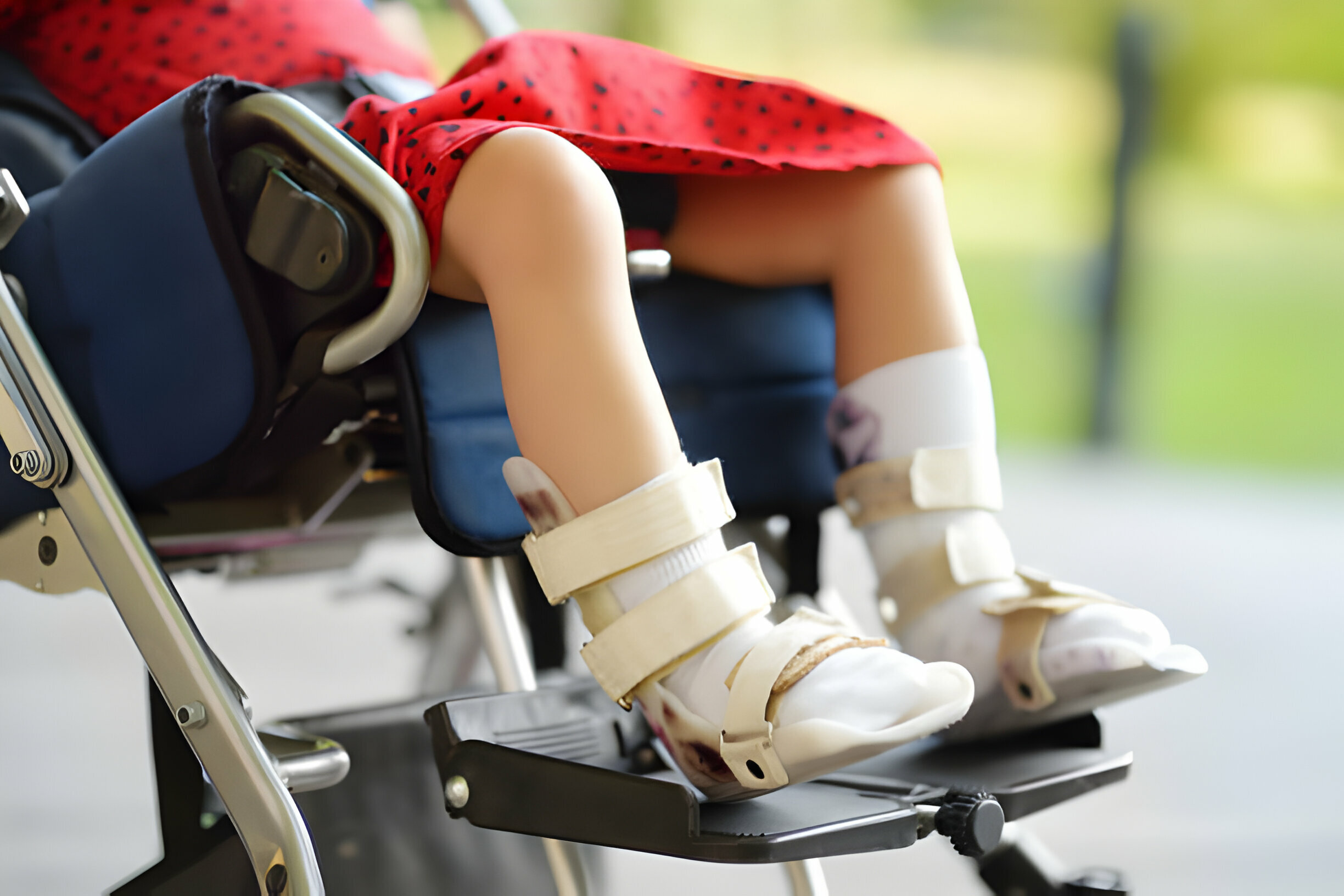One thing that most parents are worried about and question if it is something genetic to have a role in this condition, a neurological disorder causing impaired movement, muscle tone, and motor skills, is what leads to the development of cerebral palsy (CP).
Although CP is generally associated with elements such as complications at birth and lack of oxygen at birth, there are some questions about whether or not hereditary elements are involved in causing the condition.
However, scientific research on the contribution of genetics to CP to this day is still in progress. However, evidence of genetic factors that could play a role, albeit small, in incidents of CP is growing from a body of research.
In this article, we attempt to further explain the possible relationship between genetic and environmental factors in the emergence of cerebral palsy. We will also discuss many of the most known risk factors in some detail.
Can Genes Cause Cerebral Palsy?
There’s not a single gene causing cerebral palsy (CP). Any combination of many genes might increase the chances of developing CP. Changes in genes important to brain development may increase cerebral palsy risk.
Historically, gene changes were not considered a predominant factor in the etiology of cerebral palsy. But, according to modern research, gene mutations may have a larger impact. Specifically, eight gene mutations possibly linked to the beginning of cerebral palsy were identified in one study.
The identified mutations were tested in fruit fly genes, and the research found that they caused a variety of motor dysfunctions typical for cerebral palsy. Although needing more and broader research, these insights confirm the previously suspected larger involvement of genetic variations in cerebral palsy cases than was assumed before.
Where's the Evidence?

United Cerebral Pjson the other an estimated 70% of the time, the brain damage associated with Cerebral Palsy is not until birth. In most cases, it’s well past halfway through the second trimester. The second 20% of brain damage occurs at birth, and the last 10% in the first two years of life – the important period for its growth and development. They have outlined four vital terms to better understand the timing of this brain injury.
A groundbreaking research suggests that up to one in four patients with cerebral palsy could harbor an underlying genetic disorder.
Genetic factors that could lead to this neurologic disorder were pinned down, including variations on several genes, gene interactions, and complex interplay with several environmental factors. All these potential contributors to irregular brain development or injury can occur at different times in a child’s life, from prenatal to early childhood.
An investigation in Nature Genetics during the year 2020 discovered mutations in single genes to cause cerebral palsy in some instances, adding more weight to the case that genetic elements could play a bigger role in cerebral palsy than was once thought.
Although only a small percentage of instances are passed through families, the chances of the second kid in a family developing Cerebral Palsy are higher for the parents who have once experienced the disease. Molecular testing may reveal the vulnerable gene in this case.
Congenital Cerebral Palsy
The caregivers should learn about their child’s Cerebral Palsy as they get insights into how the time when the brain damage takes place decides their child might have the severity and type of Cerebral Palsy. Parents should ask their child’s doctor if the Cerebral Palsy was present at birth or developed after birth.
The timing of the brain damage during brain growth is of special importance in diagnosing Cerebral Palsy. Both terms meant whether the Cerebral Palsy was present at birth or later in life.
Congenital Cerebral Palsy happens when the child experiences events during gestation or delivery that can cause it. This is an inborn condition, although it may not be diagnosed right away, and it could also be discovered months or years later. Congenital Cerebral Palsy is the diagnosis for about seventy percent of all Cerebral Palsy cases.
Suppose a child was prone to Cerebral Palsy genetically, and the interaction of genes took place while the brain grew. In that case, it can be labeled as congenital Cerebral Palsy.
Many factors may cause Congenital Cerebral Palsy, for instance, lack of oxygen, complicated pregnancy, medical negligence, premature birth, low birth weight, lack of growth, and sexually transmitted infections.
Some problems are born with the baby’s position during birth, blood vessel disruption, incomplete brain development, and brain damage after birth. The baby’s brain damage can happen due to the baby’s stroke, fetal stroke, bleeding in the brain, and untreated baby health problems.
Acquired Cerebral Palsy
The growth of a brain continues after birth. Professionals don’t have a consensus on the precise age when brain development concludes, not to mention some even consider that it can occur at any time from two to five years. Furthermore, the start period of acquired Cerebral Palsy is also disputable since some believe it begins on the 28th day post-birth, and by some, it might be on the birth.
What differentiates acquired Cerebral Palsy from congenital Cerebral Palsy is identifying the origin and timing. Acquired cerebral palsy is considered to occur after birth, as the child is not born with any signs of it but develops it due to the destruction of the brain while it is growing. This form is not inherited and accounts for 10% of the cases.
Its acquired counterpart normally has easier determined causatives. It can be directly led to acquired Cerebral Palsy by infections to the brain, bacterial meningitis, and viral encephalitis either singularly or combined with accidents and injuries.
Acquired Cerebral Palsy can be caused by head injury because of a car accident, fall, almost drowning, or even maltreatment of a child. Also, if the damage occurs before the brain is fully developed, acquired Cerebral Palsy can be caused by a number of situations, such as Shaken Baby Syndrome.
Risk Factors for Cerebral Palsy in Twins
The research found that cerebral palsy is five times more common in twins as compared to children who are born as a single birth. In fact, an infant born out of a twin pregnancy has five times more chances to develop cerebral palsy.
This higher risk can be majorly pinned to the increased risk of complications accompanying multiple births. For instance, the risk of premature birth — one of the leading causes of cerebral palsy — rises with twins. On the other hand, there is a much higher risk of low birth weight with multiple births.
In other words, it is related to riskier pregnancy. For this reason, if a birth is twins or triplets, the chances of having cerebral palsy are still higher. Cerebral palsy risk increases if the twins are of the same gender. However, in nearly 90% of the cases where one of the pair is afflicted with cerebral palsy, the other remains unaffected.
Could Cerebral Palsy Run in Families?
Parents having cerebral palsy are usually concerned that the child may inherit the disease. Although certain inherited factors can increase the risk of cerebral palsy in the child, most affected mothers give birth to normal children.
One study concluded that among the 122 combined children of the 88 parents having cerebral palsy, only two were in the same condition.
However, it is important to note that although it does not serve as a deterrent to childbearing and pregnancy, cerebral palsy can serve as an exacerbating factor for other medical issues, such as spasticity and reflex or involuntary movements, which might increase the risks for complications pre or during delivery that might cause or lead to cerebral palsy.
There are also increased pressures on joints as a result of extra weight during pregnancy, leading to more pain and further limitation of movement. Pregnant mothers with cerebral palsy, therefore, must engage the services of a gynecologist on the best approaches to ensuring safety and how to handle possible difficulties during the pregnancy.
Other Contributory Factors to Cerebral Palsy

With this information, it might be possible to find out what causes cerebral palsy, and thus, if we are to find a way to stop it before it ever happens and help those who already have it.
Infant Illness
The possibility of cerebral palsy to develop can be related to certain diseases suffered during the early stages of life. Although it is not guaranteed to avoid the disease, early detection, and the cure can at least reduce the effects on the child’s growth.
Therefore, this calls for healthcare providers and parents to be on guard, observe any health changes in the babies at an early stage, and correct any potential diseases or problems. This care can decrease the possibility of a child developing cerebral palsy and ensure that those affected by this condition receive appropriate management and treatment.
Maternal Health
The status of the health of a mother is very vital in association with the development of cerebral palsy. Some of the other factors that might show an increase in risk to the development of cerebral palsy include the BMI of a mother, pre-existing medical conditions, and any injury suffered during pregnancy. Illnesses during pregnancy, such as being affected by infections or being exposed to harmful toxins, can also show an increase in risk.
It is absolutely necessary, therefore, that expectant mothers take all necessary care during pregnancy to evade these perils. This makes it important that antenatal check-ups, a good diet, a good lifestyle, and keeping off risk factors are highly recommended for the mother.
Bottom Line
Remember that although cerebral palsy is lifelong, early identification and intervention can greatly change the course and improve the quality of life. Thus, informed parents are in the right position to take good care of their child with cerebral palsy in the best way possible.

